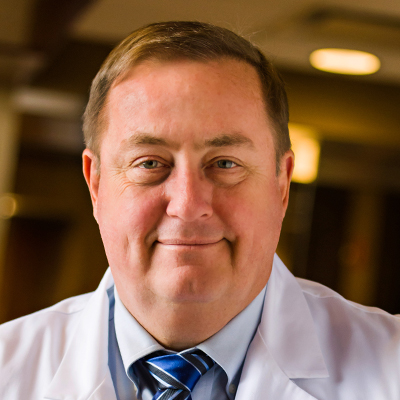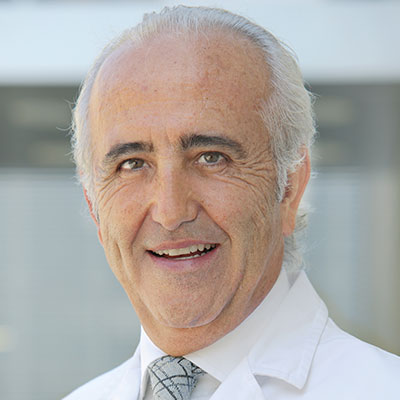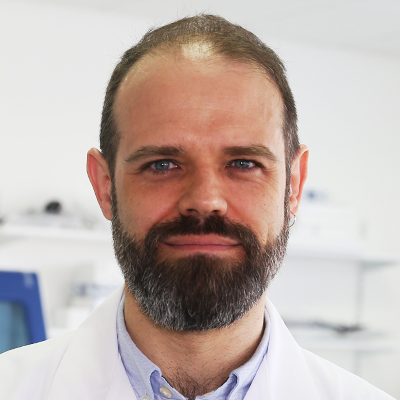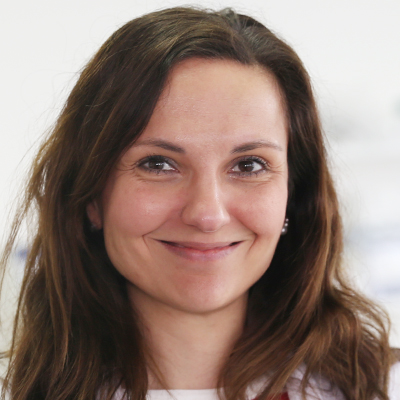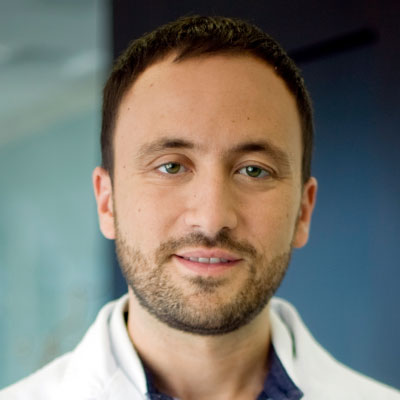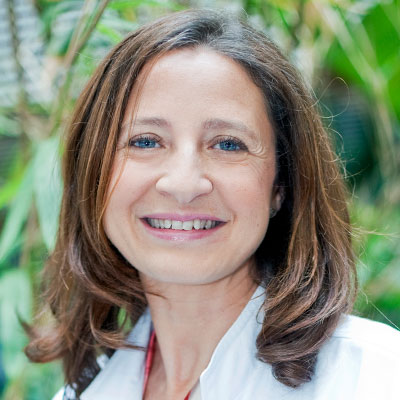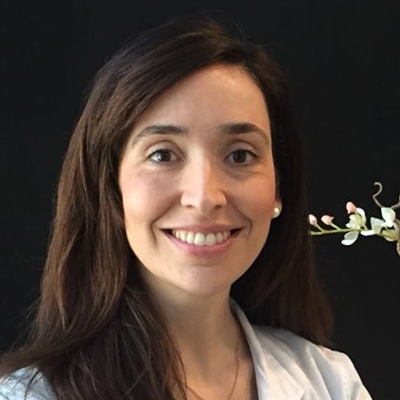Artificial Intelligence in Andrology: From Semen Analysis to Image Diagnostics.
Ghayda RA, Cannarella R, Calogero AE, Shah R, Rambhatla A, Zohdy W, Kavoussi P, Avidor-Reiss T, Boitrelle F, Mostafa T, Saleh R, Toprak T, Birowo P, Salvio G, Calik G, Kuroda S, Kaiyal RS, Ziouziou I, Crafa A, Phuoc NHV, Russo GI, Durairajanayagam D, Al-Hashimi M, Hamoda TAA, Pinggera GM, Adriansjah R, Maldonado Rosas I, Arafa M, Chung E, Atmoko W, Rocco L, Lin H, Huyghe E, Kothari P, Solorzano Vazquez JF, Dimitriadis F, Garrido N, Homa S, Falcone M, Sabbaghian M, Kandil H, Ko E, Martinez M, Nguyen Q, Harraz AM, Serefoglu EC, Karthikeyan VS, Tien DMB, Jindal S, Micic S, Bellavia M, Alali H, Gherabi N, Lewis S, Park HJ, Simopoulou M, Sallam H, Ramirez L, Colpi G, Agarwal A, Global Andrology Forum
World J Mens Health. 2023 Jun 15. doi: 10.5534/wjmh.230050. Online ahead of print.. 2023
doi:
|
|
Clinical validation of an automatic classification algorithm applied on cleavage stage embryos: analysis for blastulation, euploidy, implantation, and live-birth potential.
Valera MA, Aparicio-Ruiz B, Pérez-Albalá S, Romany L, Remohí J, Meseguer M
Hum Reprod. 2023 Apr 5:dead058. doi: 10.1093/humrep/dead058. Online ahead of print.. 2023
doi:
|
|
Deep learning system for classification of ploidy status using time-lapse videos.
Paya E, Pulgarín C, Bori L, Colomer A, Naranjo V, Meseguer M
F S Sci. 2023 Jun 30:S2666-335X(23)00035-6. doi: 10.1016/j.xfss.2023.06.002. Online ahead of print.. 2023
doi:
|
|
Discard or not discard, that is the question: an international survey across 117 embryologists on the clinical management of borderline quality blastocysts.
Chiappetta V, Innocenti F, Coticchio G, Ahlström A, Albricci L, Badajoz V, Hebles M, Gallardo M, Benini F, Canosa S, Kumpošt J, Milton K, Montanino Oliva D, Maggiulli R, Rienzi L, Cimadomo D
Hum Reprod. 2023 Aug 30:dead174. doi: 10.1093/humrep/dead174. Online ahead of print.. 2023
doi:
|
|
Optimization of human semen analysis using CASA-Mot technology.
García-Molina A, Navarro N, Valverde A, Sadeghi S, Garrido N, Soler C
Syst Biol Reprod Med. 2023 Feb 20:1-9. doi: 10.1080/19396368.2023.2170297. Online ahead of print.. 2023
doi:
|
|
Usability, accuracy, and cost-effectiveness of a medical software for early pregnancies: a retrospective study.
Blavier F, Grobet D, Duflos C, Rayssiguier R, Ranisavljevic N, Duport Percier M, Rodriguez A, Blockeel C, Santos-Ribeiro S, Faron G, Gucciardo L, Fuchs F
Hum Reprod. 2023 Feb 10:dead025. doi: 10.1093/humrep/dead025. Online ahead of print.. 2023
doi:
|
|
Using Unlabeled Information of Embryo Siblings from the Same Cohort Cycle to Enhance In Vitro Fertilization Implantation Prediction.
Tzukerman N, Rotem O, Shapiro MT, Maor R, Meseguer M, Gilboa D, Seidman DS, Zaritsky A
Adv Sci (Weinh). 2023 Jul 28:e2207711. doi: 10.1002/advs.202207711. Online ahead of print.. 2023
doi:
|
|
Automatic characterization of human embryos at day 4 post-insemination from time-lapse imaging using supervised contrastive learning and inductive transfer learning techniques
Elena Payá, Lorena Bori, Adrián Colomer, Marcos Meseguer, Valery Naranjo
Computer Methods and Programs in Biomedicine Available online 16 May 2022, 106895. In Press, Journal Pre-proof. 2022
doi:
|
|
vNOTES for adnexal procedures
Brandao, P, Almeida, A, Ramoa, P,
J Obstet Gynaecol. Apr. 2021
doi: 10.1080/01443615.2020.1841124
|
|
When Regenerative Medicine Faces the Challenges of Reproductive Medicine: A Review Study on Recent Advances in the Strategies for Derivation of Gametes from Stem Cells
Maria, Gil, Julia, Jose, V, Medrano,
EMJ Reproductive Health. 2020
doi:
|
|
Current Controversies in Prenatal Diagnosis 3: Gene editing should replace embryo selection following PGD
Wells, D, Vermeesch, J R, Simpson, J L,
Prenat Diagn. Apr. 2019
doi: 10.1002/pd.5442
|
|
Detection of segmental aneuploidy and mosaicism in the human preimplantation embryo: technical considerations and limitations.
Treff, N, Franasiak, J M,
Fertil Steril. 2017
doi:
|
|
Genome editing reveals a role for OCT4 in human embryogenesis.
Fogarty, N, McCarthy, A, Snijders, KE, Powell, BE, Kubikova, N, Blakeley, P, Lea, R, Elder, K, Wamaitha, S, Daesik, K, Maciulyte, V, Kleinjung, J, Kim, J, Wells, D, Vallier, L, Bertero, A, Turner, J, Elder, K,
Nature. 2017
doi:
|
|
Mitochondrial DNA quantification as a tool for embryo viability assessment: retrospective analysis of data from single euploid blastocyst transfers.
Ravichandran, K, McCaffrey, C, Grifo, J, Morales, A, Perloe, M, Munne, S, Wells, D, Fragouli, E,
Hum Reprod. 2017
doi:
|
|
A randomized and blinded comparison of qpcr and NGS based detection of aneuploidy in a cell line mixture model of blastocyst biopsy mosaicism.
Goodrich, D, Tao, X, Bohrer, C, Lonczak, A, Xing, T, Zimmerman, R, Zhan, Y, Scott, R T, Treff, NR, Scott, R T,
Hum Reprod. 2016
doi:
|
|
Causes and estimated incidences of sex-chromosome misdiagnosis in preimplantation genetic diagnosis of aneuploidy.
Ravichandran, K, Guzman, L, Escudero, T, Zheng, X, Colls, P, Jordan, A, Cohen, J, Wells, D, Munne, S, Wells, D,
RBM Online. 2016
doi:
|
|
Clinical utility of sperm DNA fragmentation testing: practice recommendations based on clinical scenarios.
Agarwal, A, Majzoub, A, Esteves, SC, Ko, E, Ramasamy, R, Zini, A,
Transl Androl Urol. 2016
doi:
|
|
Current controversies in prenatal diagnosis 4: preimplantation genetic screening should be routinely offered to all preimplantation genetic diagnosis cases.
Harper, J, Wells, D, Simpson, JL,
Prenat Diagn. 2016
doi:
|
|
Decreased fecundity and sperm DNA methylation patterns.
Jenkins, TG, Aston, KI, Meyer, TD, Hotaling, J M, Shamsi, MB, Johnstone, EB, Cox, KJ, Stanford, JB, Porucznik, CA, Carrell, DT,
Fertil Steril. 2016
doi:
|
|
Detection of Missing Proteins Using the PRIDE Database as a Source of Mass Spectrometry Evidence
Garin-Muga, A, Odriozola, L, Martinez-Val, A, Del Toro, N, Martinez, R, Molina, M, Cantero, L, Rivera, R, Garrido, N, Dominguez, F, Sanchez Del Pino, M M, Vizcaino, J A, Corrales, F J, Segura, V,
J Proteome Res. 4-Nov. 2016
doi: 10.1021/acs.jproteome.6b00437
|
|
Development and validation of concurrent preimplantation genetic diagnosis for single gene disorders and comprehensive chromosomal aneuploidy screening without whole-genome amplification.
Zimmerman, RS, Jalas, C, Tao, X, Fedick, AM, Kim, J, Pepe, RJ, Northrop, LE, Scott, R T, Treff, NR, , Scott, R T,
Fertil Steril. 2016
doi:
|
|
Drug gastrointestinal absorption in rat: Strain and gender differences.
Oltra, D, Mangas-Sanjuan, V, Gonzalez-Alvarez, I, Colon-Useche, S, Gonzalez-Alvarez, M, Bermejo, M,
Eur J Pharm Sci. 2016
doi:
|
|
Effect of surgery on ovarian reserve in women with endometriomas, endometriosis and controls.
Goodman, L, Goldberg, J, Flyckt, RL, Gupta, M, Harwalkar, J, Falcone, T,
Am J Obstet Gynecol. 2016
doi:
|
|
Evaluation of the antiproliferative, proapoptotic, and antiangiogenic effects of a double-stranded RNA mimic complexed with polycations in an experimental mouse model of leiomyoma
Garcia-Pascual, C M, Ferrero, H, Juarez, I, Martinez, J, Villanueva, A, Pozuelo-Rubio, M, Soengas, M, Tormo, D, Simon, C, Gomez, R, Pellicer, A,
Fertil Steril. Feb. 2016
doi: 10.1016/j.fertnstert.2015.10.037
|
|
Expanded carrier screening in an infertile population: how often is clinical decision making affected?
Franasiak, J M, Olcha, M, Bergh, PA, Hong, KH, Forman, EJ, Werner, M D,
Genet Med Off J Am Coll Med Genet. 2016
doi:
|
|
First validated clinical test selects best embryos for IVF and viable pregnancies.
Fragouli, E,
MLO Med Lab Obs. 2016
doi:
|
|
Frozen-thawed embryo transfers in natural cycles with spontaneous or induced ovulation: the search for the best protocol continues
Montagut, M, Santos-Ribeiro, S, De, Vos, M, Polyzos, NP, Drakopoulos, P, Mackens, S, van, de, Vijver, A, Verheyen, G, Tournaye, H, Blockeel, C,
Hum Reprod. 2016
doi:
|
|
Generation of mice with longer and better preserved telomeres in the absence of genetic manipulations
Varela, E, Muñoz, M, Tejera, M, Ortega, I, Blasco, M,
Nature Communications. 2016
doi:
|
|
Hormone-Based Treatments in Subfertile Males. Review.
Patel, DP, Chandrapal, JC, Hotaling, J M,
Curr Urol Rep. 2016
doi:
|
|
Investigation of sperm telomere length as a potential marker of paternal genome integrity and semen quality.
Cariati, F, Jaroudi, S, Alfarawati, S, Raberi, A, Alviggi, C, Pivonello, R, Wells, D,
RBM Online. 2016
doi:
|
|
IVF: progress through Technology development .
Garcia-Velasco, J A, Seli, E,
Curr Opin Obstet Gynecol. 2016
doi:
|
|
Microfluidics: The future of microdissection TESE?
Samuel, R, Badamjav, O, Murphy, KE, Patel, DP, Son, J, Gale, BK, Carrell, DT, Hotaling, J M,
Syst Biol Reprod Med. 2016
doi:
|
|
Mitochondrial DNA as a biomarker for in vitro fertilization (IVF) outcome
Seli, E,
Curr Opin Obstet Gynecol. 2016
doi:
|
|
Mosaicism: “survival of the fittest” versus “no embryo left behind”.
Munne, S, Grifo, J, Wells, D,
Fertil Steril. 2016
doi:
|
|
Multiple thrombophilic single nucleotide polymorphisms lack a significant effect on outcomes in fresh IVF cycles: an analysis of 1717 patients.
Patounakis, G, Bergh, E, Forman, E, Tao, X, Lonczak, A, Franasiak, J M, Treff, N, Scott, R T,
J Assist Reprod Genet. 2016
doi:
|
|
Next Generation Sequencing Based Comprehensive Chromosome Screening in Mouse Polar Bodies, Oocytes, and Embryos.
Treff, NR, Krisher, R, Tao, X, Garnsey, H, Bohrer, C, Silva, E, Landis, J, Taylor, D, Scott, R T, Woodruff, TK, Duncan, FE, Taylor, D,
Biol Reprod. 2016
doi:
|
|
Optimization of microelectrophoresis to select highly negatively charged sperm.
Simon, L, Murphy, K, Aston, KI, Emery, BR, Hotaling, J M, Carrell, DT,
J Assist Reprod Genet. 2016
doi:
|
|
Ovarian stimulation, insemination, and contraception
Galliano, D,
Fertil Steril. Mar. 2016
doi: 10.1016/j.fertnstert.2015.12.025
|
|
Pathophysiologic processes have an impact on the plasma metabolomic signature of endometriosis patients
Vicente-Munoz, S, Morcillo, I, Puchades-Carrasco, L, Paya, V, Pellicer, A, Pineda-Lucena, A,
Fertil Steril. Dec. 2016
doi: 10.1016/j.fertnstert.2016.09.014
|
|
Predictors of sperm recovery after cryopreservation in testicular cancer.
Hotaling, J M, Patel, DP, Vendryes, C, Lopushnyan, NA, Presson, AP, Zhang, C, Muller, CH, Walsh, TJ,
Asian J Androl. 2016
doi:
|
|
Preimplantation genetic diagnosis for infertility.
Wells, D, Lewin, J,
Textbook of Assisted Reproductive technologies. 2016
doi:
|
|
Preimplantation genetic diagnosis: an overview and recent advances.
Ben-Nagi, J, Serhal, P, SenGupta, S, Doye, K, Wells, D,
Obstet Gynaecol. 2016
doi:
|
|
Same-sex reproduction:Medical treatment options and psychosocial considerations.
Greenfeld, D, Seli, E,
2016
doi:
|
|
SNP array-based analyses of unbalanced embryos as a reference to distinguish between balanced translocation carrier and normal blastocysts.
Treff, NR, Thompson, K, Rafizadeh, M, Chow, M, Morrison, L, Tao, X, Garnsey, H, Reda, CV, Metzgar, TL, Neal, S, Jalas, C, Scott, R T, Forman, E, Reda, CV,
J Assist Reprod Genet. 2016
doi:
|
|
Spermatozoa from infertile patients exhibit differences of DNA methylation associated with spermatogenesis-related processes: an array-based analysis
Camprubi, C, Salas-Huetos, A, Aiese-Cigliano, R, Godo, A, Pons, M C, Castellano, G, Grossmann, M, Sanseverino, W, Martin-Subero, J I, Garrido, N, Blanco, J,
Reprod Biomed Online. Dec. 2016
doi: 10.1016/j.rbmo.2016.09.001
|
|
Técnicas invasivas y no invasivas en el diagnóstico de embriones humanos.
Calomarde, C, Carmona, L, Guerra, I, Gutierrez, D, Santana, A, Domingo, J,
Rev Iberoam Fert Rep Hum. 2016
doi:
|
|
Teratozoospermia and asthenozoospermia are associated with specific epigenetic signatures.
Jenkins, TG, Aston, KI, Hotaling, J M, Shamsi, MB, Simon, L, Carrell, DT,
Andrology. 2016
doi:
|
|
The why, the how and the when of PGS 2.0: current practices and expert opinions of fertility specialists, molecular biologists, and embryologists
Sermon, K, Capalbo, A, Cohen, J, Coonen, E, De Rycke, M, De Vos, A, Delhanty, J, Fiorentino, F, Gleicher, N, Griesinger, G, Grifo, J, Handyside, A, Harper, J, Kokkali, G, Mastenbroek, S, Meldrum, D, Meseguer, M, Montag, M, Munne, S, Rienzi, L, Rubio, C, Scott, K, Scott, R T, Simon, C, Swain, J, Treff, N, Ubaldi, F, Vassena, R, Vermeesch, J R, Verpoest, W, Wells, D, Geraedts, J,
Mol Hum Reprod. Aug. 2016
doi: 10.1093/molehr/gaw034
|
|
Towards clinical application of pronuclear transfer to prevent mitochondrial DNA disease.
Hyslop, LA, Blakeley, P, Craven, L, Richardson, J, Fogarty, NM, Fragouli, E, Lamb, M, Wamaitha, SE, Prathalingam, N, Zhang, Q, O'Keefe, H, Takeda, Y, Arizzi, L, Alfarawati, S, Tuppen, HA, Irving, L, Kalleas, D, Wamaitha, SE, Wells, D, Murdoch, AP, Turnbull, DM, Niakan, KK, Herbert, M,
Nature. 2016
doi:
|
|
Why do euploid embryos miscarry? A case-control study comparing the rate of aneuploidy within presumed euploid embryos that resulted in miscarriage or live birth using next-generation sequencing.
Maxwell, SM, Colls, P, Hodes-Wertz, B, McCulloh, DH, McCaffrey, C, Wells, D, Munne, S, Grifo, J,
Fertil Steril. 2016
doi:
|
|
24-chromosome PCR for aneuploidy screening.
Werner, M D, Scott, R T,
Curr Opin Obstet Gynecol. 2015
doi:
|
|
Endometriosis and ascites, a strategy to achieve pregnancy.
Sidiropoulou, Z, Setúbal, A, Barbosa, C, Soares, S R,
J Min Inv Gynecol. 2015
doi:
|
|
Introducing Larger Equipment: A Novel Method in Laparoscopic Surgery with Smaller Port Sites.
Kim, S, Goodman, L, Goldberg, J,
J Minim Invasive Gynecol. 2015
doi:
|
|
Karyomapping allows preimplantation genetic diagnosis of a de-novo deletion undetectable using conventional PGD technology.
Gimenez, C, Sarasa, J, Arjona, C, Vilamajo, E, Martinez-Pasarell, O, Wheeler, K, Valls, G, Garcia-Guixe, E, Wells, D, Garcia-Guixe, E,
RBM Online. 2015
doi:
|
|
La tecnología del Time-lapse y su aplicación en las clínicas de reproducción asistida.
Meseguer, M, Motato, M,
ASEBIR. 2015
doi:
|
|
Micro-electrophoresis: a noninvasive method of sperm selection based on membrane charge.
Simon, L, Murphy, K, Aston, K, Emery, B, Hotaling, J M, Carrell, D,
Fertil Steril. 2015
doi:
|
|
New strategy for diagnosing embryo implantation potential by combining proteomics and time-lapse technologies
Dominguez, F, Meseguer, M, Aparicio-Ruiz, B, Piqueras, P, Quinonero, A, Simon, C,
Fertil Steril. Oct. 2015
doi: 10.1016/j.fertnstert.2015.06.032
|
|
Ongoing pregnancy rates in intrauterine insemination are affected by late follicular-phase progesterone levels
Requena, A, Cruz, M, Pacheco, A, Garcia-Velasco, J A,
Fertil Steril. Oct. 2015
doi: 10.1016/j.fertnstert.2015.06.026
|
|
Ovarian ageing
Seli, E,
Semin Reprod Med. 2015
doi:
|
|
Routine use of next-generation sequencing for preimplantation genetic diagnosis of blastomeres obtained from embryos on day 3 in fresh in~vitro fertilization cycles.
Ukaszuk K, Pukszta, S, Wells, D, Cybulska, C, Liss, J, P?ociennik, ?, Kuczy?ski, W, Zabielska, J,
Fertil Steril. 2015
doi:
|
|
s endometrial receptivity transcriptomics affected in women with endometriosis? A pilot study.
Garcia-Velasco, J A, Fassbender, A, Ruiz, Alonso, M, Blesa, D, D'Hooghe, T, Simon, C,
RBM Online. 2015
doi:
|
|
Targeted Germline Modifications in Rats Using CRISPR/Cas9 and Spermatogonial Stem Cells.
Chapman, K, Medrano, G, Jaichander, P, Chaudhary, Waits, A, Nobrega, M, Hotaling, J M, Ober, C, Hamra, F, Ober, C,
Cell Rep. 2015
doi:
|
|
The use of morphokinetics as a predictor of implantation: a multicentric study to define and validate an algorithm for embryo selection
Basile, N, Vime, P, Florensa, M, Aparicio Ruiz, B, Garcia-Velasco, J A, Remohi, J, Meseguer, M,
Hum Reprod. Feb. 2015
doi: 10.1093/humrep/deu331
|
|
The use of morphokinetics as a predictor of implantation: a multicentric study to define and validate an algorithm for embryo selection.
Basile, N, Vime, P, Florensa, M, Aparicio, Ruiz, B, Garcia-Velasco, J A, Remohi, J, Meseguer, M,
Hum Reprod. 2015
doi:
|
|
Time-Lapse in the IVL lab: how should we assess potential benefit
Basile, N, Barrière, P, Meseguer, M, Freour, T,
Hum Reprod. 2015
doi:
|
|
Validation of next-generation sequencing for comprehensive chromosome screening of embryos.
Kung, A, Munne, S, Bankowski, B, Coates, A, Wells, D,
RBM Online. 2015
doi:
|
|
Variability of permeability estimation from different protocols of subculture and transport experiments in cell monolayers.
Oltra, D, Mangas-Sanjuan, V, Centelles-Sangüesa, A, Gonzalez-Garcia, I, Sanchez-Castaño, G, Gonzalez-Alvarez, M, Casabo, VG, Merino, V, Gonzalez-Alvarez, I, Bermejo, M,
J Pharmacol Toxicol Methods. 2015
doi:
|
|
What does morphokinetics add to embryo selection and in-vitro fertilization outcomes?
Basile, N, Caiazzo, M, Meseguer, M,
Curr Opin Obstet Gynecol. Jun. 2015
doi: 10.1097/GCO.0000000000000166
|
|
Analysis of embryo morphokinetics, multinucleation and cleavage anomalies using continuous time-lapse monitoring in blastocyst transfer cycles.
Desai, N, Ploskonka, S, Goodman, L, Austin, C, Goldberg, JM, Falcone, T,
Reprod Biol Endocrinol 2014 Jun 20;12(1):54. 2014
doi:
|
|
Clinical genetic testing for male factor infertility: current applications and future directions.
Hotaling, J M, Carrell, DT,
Andrology. 2014
doi:
|
|
Clinical utilization of a rapid low-pass whole genome sequencing technique for the diagnosis of aneuploidy in human embryos prior to implantation.
Wells, D, Kaur, K, Grifo, J, Glassner, M, Taylor, JC, Fragouli, E, Munne, S,
J Med Genet. 2014
doi:
|
|
Comprehensive chromosome screening (CCS) with synchronous blastocyst transfer: Time for a paradigm shift.
Scott, R T, Franasiak, J M, Forman, E,
Fertil Steril. 2014
doi:
|
|
Genome-wide karyomapping accurately identifies the inheritance of single-gene defects in human preimplantation embryos in vitro.
Natesan, SA, Bladon, AJ, Coskun, S, Qubbaj, W, Prates, R, Munne, S, Coonen, E, Dreesen, JC, Stevens, SJ, Paulussen, AD, Stock-Myer, SE, Wilton, LJ, Jaroudi, S, Wells, D, Brown, AP, Handyside, AH, Dreesen, JC,
Genet Med. 2014
doi:
|
|
Live birth after PGD with confirmation by a comprehensive approach (karyomapping) for simultaneous detection of monogenic and chromosomal disorders.
Natesan, SA, Handyside, AH, Thornhill, AR, Ottolini, CS, Sage, K, Summers, MC, Konstantinidis, M, Wells, D, Griffin, DK,
RBM Online. 2014
doi:
|
|
Metabolomic prediction of pregnancy viability in superovulated cattle embryos and recipients with fourier transform infrared spectroscopy
Muñoz, M, Uyar, A, Correia, E, Ponsart, C, Guyader-Joly, C, Martinez-Bello, D, Marquant-Le, Guienne, B, Fernandez-Gonzalez, A, Diez, C, Caamaño, JN, Trigal, B, Humblot, P, Carrocera, S, Martin, D, Seli, E, Gomez, E,
Biomed Res Int. 2014
doi:
|
|
Next-generation sequencing: the dawn of a new era for preimplantation genetic diagnostics.
Wells, D,
Fertil Steril. 2014
doi:
|
|
Non-invasive prediction of embryonic sex in cattle by metabolomic analysis of in vitro culture medium with Fourier transfrom infrared spectroscopy.
Muñoz, M, Uyar, A, Correia, E, Diez, C, Fernandez, A, Caamaño, JN, Trigal, B, Carrocera, S, Seli, E, Gomez, E,
Metabolomics. 2014
doi:
|
|
Non-invasive techniques: Embryo selection by transcriptomics, proteomics and metabolomics.
Uyar, A, Seli, E,
2014
doi:
|
|
OMICS- current and future perspectives in reproductive medicine and technology.
Rivera, R, Garrido, N, Sota, N, Varghese, A,
Journal of Human Reproductive Sciences. 2014
doi:
|
|
Simple circumcision device: proof of concept for a single-visit, adjustable device to facilitate safe adult male circumcision.
Kadlec, AO, Ohlander, S, Hotaling, J M, Hannick, J, Niederberger, C, Turk, TM,
Urolithiasis. 2014
doi:
|
|
Simultaneous assessment of aneuploidy, polymorphisms, and mitochondrial DNA content in human polar bodies and embryos with the use of a novel microarray platform.
Konstantinidis, M, Alfarawati, S, Hurd, D, Paolucci, M, Shovelton, J, Fragouli, E, Wells, D,
Fertil Steril. 2014
doi:
|
|
Assessment of sperm using mRNA microarray technology.
Garrido, N, Garcia-Herrero, S, Meseguer, M,
Fertil Steril. 2013
doi:
|
|
Blastocyst biopsy with comprehensive chromosome screening and fresh embryo transfer significantly increases IVF implantation and delivery rates: a randomized controlled trial.
Scott, R T, Ferry, KM, Forman, EJ, Hong, KH, Scott, KL, Taylor, D, Tao, X, Treff, NR,
Fertil Steril. 2013
doi:
|
|
Cleavage stage biopsy significantly impairs human embryonic implantation potential while blastocyst biopsy does not: a randomized and paired clinical trial.
Scott, R T, Ferry, KM, Forman, EJ, Zhao, T, Treff, NR,
Fertil Steril. 2013
doi:
|
|
Comprehensive chromosome screening alters traditional morphology-based embryo selection: a prospective study of 100 consecutive cycles of planned fresh euploid blastocyst transfer.
Forman, EJ, Upham, KM, Cheng, MZ, Zhao, T, Hong, KH, Treff, NR, Scott, R T,
Fertil Steril. 2013
doi:
|
|
Ergonomic deficits in robotic gynecologic oncology surgery: A need for intervention.
Craven, R, Franasiak, J M, Mosaly, P, Gehrig, PA,
J Minim Invasive Gynecol. 2013
doi:
|
|
Evaluation of targeted next-generation sequencing based preimplantation genetic diagnosis of monogenic disease.
Treff, NR, Fedick, A, Tao, X, Devkota, B, Taylor, D, Scott, R T,
Fertil Steril. 2013
doi:
|
|
False positive rate of an arrayCGH platform for single-cell preimplantation genetic screening and subsequent clinical application on day-3
Mir, P, Rodrigo, L, Mercader, A, Buendia, P, Mateu, E, Milan-Sanchez, M, Peinado, V, Pellicer, A, Remohi, J, Simon, C, Rubio, C,
J Assist Reprod Genet. Jan. 2013
doi: 10.1007/s10815-012-9918-4
|
|
Four-hour quantitative real-time polymerase chain reaction– based comprehensive chromosome screening and accumulating evidence of accuracy, safety predictive values and clinical efficacy.
Treff, NR, Scott, R T,
Fertil Steril. 2013
doi:
|
|
Gamete and embryo assessment in assisted reproduction: emerging technologies
Gardner, D, Sakkas, D, Seli, E, Wells, D,
2013
doi:
|
|
High-density SNP arrays and next generation sequencing for pre-implantation genetic diagnosis.
Handyside, A, Wells, D,
Gamete and embryo assessment in assisted reproduction: emerging technologies. 2013
doi:
|
|
Incidental identification of balanced translocation carrier patients through comprehensive chromosome screening of IVF-derived blastocysts.
Treff, NR, Forman, EJ, Katz-Jaffe, MG, Schoolcraft, WB, Levy, B, Scott, R T,
J Assist Reprod Genet. 2013
doi:
|
|
Metabolomic profiling of oocytes and embryos using spectroscopy: potential clinical use and pitfalls.
Sakkas, D, Seli, E,
2013
doi:
|
|
mRNA-binding protein ZFP36 is expressed in atherosclerotic lesions and reduces inflammation in human aortic endothelial cells.
Zhang, H, Taylor, WR, Joseph, G, Sidell, N, Seli, E, Kallen, CB,
Arterioscl Thromb Vasc Biol. 2013
doi:
|
|
Next-generation sequencing for preimplantation genetic diagnosis. Letter to the Editor.
Treff, NR, Forman, EJ, Scott, R T,
Fertil Steril. 2013
doi:
|
|
Regulation of gene expression in the oocyte and early embryo: implications for transcriptomic and proteomic embryo assessment.
Kristiansson, H, Seli, E,
2013
doi:
|
|
Selection of high potential embryos using time-lapse imaging: the era of morphokinetics.
Herrero, J, Meseguer, M,
Fertil Steril. 2013
doi:
|
|
The Paradigm of Clinical IVF is shifting: The Time to Incorporate Validated Technologies and an Enhanced Understanding of Physiology is now.
Hong, KH, Scott, R T,
J Clin Embryology. 2013
doi:
|
|
The Textbook of Clinical Embryology
Coward, Wells, D,
2013
doi:
|
|
Transcriptomic analysis of cumulus and granulosa cells as a marker of embryo viability.
Fragouli, E, Wells, D,
Gamete and embryo assessment in assisted reproduction: emerging technologies. 2013
doi:
|
|
Validity and reliability of a smartphone application for the assessment of penile deformity in Peyronie's disease.
Hsi, RS, Hotaling, J M, Hartzler, AL, Holt, SK, Walsh, TJ,
J Sex Med. 2013
doi:
|
|
Advances in ovarian hyperstimulation in cancer patients.
Domingo, J, Guillen, V, Martinez, M, Rabadan, S, Pellicer, A, Garcia-Velasco, J A,
US Obstetrics & Gynecology. 2012
doi:
|
|
Comprehensive chromosome screening is highly predictive of the reproductive potential of human embryos: a prospective, blinded, nonselection study.
Scott, R T, Ferry, KM, Su, J, Tao, X, Scott, KL, Treff, NR,
Fertil Steril. 2012
doi:
|
|
Development and validation of an accurate quantitative real-time polymerase chain reaction – based assay for human blastocyst comprehensive chromosomal aneuploidy screening. Seminal Contribution.
Treff, NR, Tao, X, Ferry, KM, Su, J, Taylor, D, Scott, R T,
Fertil Steril. 2012
doi:
|
|
Development of a novel synthetic oligopeptide for the detection of DNA damage in human spermatozoa.
Enciso, M, Pieczenik, G, Cohen, J, Wells, D,
Hum Reprod. 2012
doi:
|
|
Efficient Use of Early Obstetric Sonography in the Emergency Department Setting.
Goodman, L, Eichelberger, KY, Wolfe, H, Steiner, AZ,
J Ultrasound Med. 2012
doi:
|
|
El futuro de la reproducción son los incubadores con un sistema de time-lapse?
Tejera, A, Meseguer, M,
ASEBIR. 2012
doi:
|
|
Hepatitis B virus in human oocytes and embryos
Garrido, N, Bellver, J, Rubio, C, Pellicer, A,
Hum Reprod. Apr. 2012
doi: 10.1093/humrep/des024
|
|
Hepatitis B virus in human oocytes and embryos.
Garrido, N, Bellver, J, Rubio, C, Pellicer, A,
Hum Reprod. 2012
doi:
|
|
Methods for comprehensive chromosome screening of oocytes and embryos: capabilities, limitations, and evidence of validity.
Scott, R T,
J Assist Reprod Genet. 2012
doi:
|
|
Microarray-CGH for the Assessment of Aneuploidy in Human Polar Bodies and Oocytes.
Jaroudi, S, Wells, D,
Methods in Molecular Biology. 2012
doi:
|
|
PGD and aneuploidy screening for 24 chromosomes by genome-wide SNP analysis: a responsible path towards greater utility.
Bisignano, A, Wells, D, Harton, G, Munne, S,
RBM Online. 2012
doi:
|
|
The mRNA-binding protein Zfp36 is up-regulated by b-adrenergic stimulation and represses IL-6 production in 3T3-L1 adipocytes.
Brahma, PK, Murray, BS, Shu, F, Sidell, N, Seli, E, Kallen, CB,
Obesity. 2012
doi:
|
|
Time-lapse technology: evaluation of embryo quality and new markers for embryo selection.
Basile, N, Meseguer, M,
Expert Rev Obstet Gynecol. 2012
doi:
|
|
Aplicación de la tecnología del embryoscope para la cuentificación de la calidad ovocitaria mediante el análisis de los patrones de respiración.
Herrero, J, Tejera, A, Cruz, M, Meseguer, M,
ASEBIR. 2011
doi:
|
|
Cinematografía para el estudio de la calidad embrionaria. Embryoscope
Herrero, J, Tejera, A, Cruz, M, Meseguer, M,
ASEBIR. 2011
doi:
|
|
Female overweight is not associated with a higher embryo euploidy rate in first trimester miscarriages karyotyped by hysteroembryoscopy
Bellver, J, Cruz, F, Martinez, M C, Ferro, J, Ramirez, J F, Pellicer, A, Garrido, N,
Fertil Steril. Oct. 2011
doi: 10.1016/j.fertnstert.2011.07.003
|
|
How to improve IVF success rates and increase access to treatment: back to basics or more technology?
Wells, D,
Expert Rev Obstet Gynecol. 2011
doi:
|
|
Therapeutic treatments of mtDNA diseases at the earliest stages of human development.
Chiaratti, MR, Meirelles, FV, Wells, D, Poulton, J,
Mitochondrion. 2011
doi:
|
|
Validation of microarray comparative genomic hybridization for comprehensive chromosome analysis of embryos.
Gutierrez-Mateo, C, Colls, P, Sanchez-Garcia, J, Escudero, T, Prates, R, Ketterson, K, Wells, D, Munne, S,
Fertil Steril. 2011
doi:
|
|
Accurate single cell 24 chromosome aneuploidy screening using whole genome amplification and single nucleotide polymorphism microarrays.
Treff, NR, Su, J, Tao, X, Levy, B, Scott, R T,
Fertil Steril. 2010
doi:
|
|
Assessing the reproductive competence of individual embryos: a proposal for the validation of new "-omics" technologies.
Scott, R T, Treff, NR,
Fertil Steril. 2010
doi:
|
|
Improved detection of aneuploid blastocysts using a new 12-chromosome FISH test.
Munne, S, Fragouli, E, Colls, P, Katz-Jaffe, MG, Schoolcraft, WB, Wells, D,
RBM Online. 2010
doi:
|
|
Improving FISH diagnosis for preimplantation genetic aneploidy screening
Mir, P, Rodrigo, L, Mateu, E, Milan, M, Mercader, A, Buendia, P, Delgado, A, Pellicer, A, Remohi, J, Rubio, C,
Hum Reprod. 2010
doi:
|
|
Mitotic expression of Spo13 alters M-phase progression and nucleolar localization of Cdc14 in budding yeast.
Varela, E, Schlecht, U, Moina, A, Fackenthal, JD, Washburn, BK, Niederhauser-Wiederkehr, C, Tsai-Pflugfelder, M, Primig, M, Gasser, SM, Esposito, RE,
Genetics. 2010
doi:
|
|
OMICS in assisted reproduction: possibilities and pitfalls.
Seli, E, Robert, C, Sirard, M-A,
Mol Hum Reprod. 2010
doi:
|
|
Pregnancy rates alter incubation in new time-lapse incubator (embryoscope) providing detailed information about embryo development compared to incubation in a standard incubator
Meseguer, M, Hilligsøe, KM, Pedersen, KS, Herrero, J, Tejera, A, Garrido, N,
Fertil Steril. 2010
doi:
|
|
Robust embryo identification using polar body single nucleotide polymorphism microarray based DNA fingerprinting.
Treff, NR, Su, J, Kasabwala, N, Tao, X, Miller, KA, Scott, R T,
Fertil Steril. 2010
doi:
|
|
Single Cell Whole Genome Amplification Technique Impacts the Accuracy of SNP Microarray Based Genotyping and Copy Number Analyses.
Treff, NR, Su, J, Tao, X, Northrop, L, Scott, R T,
Mol Hum Reprod. 2010
doi:
|
|
SNP microarray based 24 chromosome aneuploidy screening demonstrates that cleavage stage FISH poorly predicts aneuploidy in embryos that develop to morphologically normal blastocysts.
Northrop, L, Treff, NR, Levy, B, Scott, R T,
Mol Hum Reprod. 2010
doi:
|
|
SNP microarray based 24 chromosome aneuploidy screening is significantly more consistent than FISH.
Treff, NR, Levy, B, Su, J, Northrop, L, Tao, X, Scott, R T,
Mol Hum Reprod. 2010
doi:
|
|
Surgical management of tubal disease and infertility
Coughlan, C, TC, Li,
Obstetrics. 2010
doi:
|
|
Technology requirements for preimplantation genetic diagnosis to improve assisted reproduction outcomes.
Munne, S, Wells, D, Cohen, J,
Fertil Steril. 2010
doi:
|
|
Visualizing yeast chromosomes and nuclear architecture.
Meister, P, Gehlen, LR, Varela, E, Kalck, V, Gasser, SM,
Methods in Enzymology. 2010
doi:
|
|
14-gauge angiocatheter: the assist port.
Hotaling, J M, Shear, S, Lendvay, TS,
J Laparoendosc Adv Surg Tech A. 2009
doi:
|
|
Computerized analysis of normal fetal heart rate pattern throughout gestation.
Serra, V, Bellver, J, Moulden, M, Redman, CW,
Ultrasound Obstet Gynecol. 2009
doi:
|
|
Lte1, Cdc14 and MEN-controlled Cdk inactivation in yeast coordinate rDNA decompaction with late telophase progression.
Varela, E, Shimada, K, Laroche, T, Leroy, D, Gasser, SM,
EMBO J. 2009
doi:
|
|
Nuevos métodos de selección embrionaria: una nueva tendencia para transferencias únicas.
Herrero, J, Tejera, A, De, Los, Santos, MJ, Garrido, N, Ramsing, N, Meseguer, M,
Revista Iberoamericana de Fertilidad y Reproducción Humana. 2009
doi:
|
|
Situación Actual de las técnicas de preservación de la Fertilidad.
Guillen, V, Domingo, S, Ayllon, Y, Domingo, J, Garcia, JA,
Cuadernos de Medicina Reproductiva. 2009
doi:
|
|
TGF-beta regulates expression of transcription factor KLF6 and its splice variants, and promotes co-operative transactivation of common target genes through a Smad3/Sp1/KLF6 interaction.
Botella, LM, Sanz-Rodriguez, F, Komi, Y, Fernandez-L, A, Varela, E, Garrido-Martin, EM, Narla, G, Friedman, SL, Kojima, S, Friedman, SL,
Biochem J. 2009
doi:
|
|
Alternative splicing of the mouse embryonic poly(A) binding protein (ePAB) RNA is regulated by an exonic splicing enhancer: a model for post-transcriptional control of gene expression in the oocyte.
Seli, E, Yaba, A, Guzeloglu-Kayisli, O, Lalioti, MD,
Mol Hum Reprod. 2008
doi:
|
|
Evaluation of embryo quality by Metabolomics: A new strategy to aid single embryo transfer.
Sakkas, D, Morita, H, Yamashita, N, Kato, LO, Botros, L, Roos, P, Seli, E,
J Mammal Ova Res. 2008
doi:
|
|
Functional localization of DNA damage to pore complex bound to Slx5/8 SUMO-dependent E3 ligase
Nagai, S, Dubrana, K, Tsai-Pflufelder, M, Davidson, M, Roberts, T, Brown, G, Varela, E, Hediger, F, Gasser, SM, Krogan, NJHediger, F,
Science. 2008
doi:
|
|
Human immunodeficiency type-1 virus (HIV-1) infection in serodiscordant couples (SDCs) does not have an impact on embryo quality or intracytoplasmic sperm injection (ICSI) outcome
Melo, M A, Meseguer, M, Bellver, J, Remohi, J, Pellicer, A, Garrido, N,
Fertil Steril. Jan. 2008
doi: 10.1016/j.fertnstert.2007.02.004
|
|
Identification and characterization of human embryonic poly(A) binding protein (ePAB).
Guzeloglu-Kayisli, O, Pauli, SA, Demir, H, Lalioti, MD, Sakkas, D, Seli, E,
Mol Hum Reprod. 2008
doi:
|
|
Non-invasive metabolomic profiling of embryo culture media using proton NMR correlates with reproductive potential of embryos in women undergoing in vitro fertilization.
Seli, E, Botros, L, Sakkas, D, Burns, DH,
Fertil Steril. 2008
doi:
|
|
Noninvasive metabolomic profiling of human embryo culture media using Raman spectroscopy predicts embryonic reproductive potential: a prospective blinded pilot
Scott, R T, Seli, E, Miller, K, Sakkas, D, Scott, K, Burns, DH,
Fertil Steril. 2008
doi:
|
|
Unique pharmacology of KAR-2, a potential anti-cancer agent: absorption modeling and selective mitotic spindle targeting.
Gonzalez-Alvarez, I, Gonzalez-Alvarez, M, Oltra, D, Merino, V, Tõkesi, N, Ovadi, J, Bermejo, M,
Eur J Pharm Sci. 2008
doi:
|
|
Use of comprehensive chromosomal screening for embryo assessment: microarrays and CGH.
Wells, D, Alfarawati, S, Fragouli, E,
Mol Hum Reprod. 2008
doi:
|
|
Future genetic and other technologies for assessing embryos.
Wells, D,
Handbook of Embryo Evaluation. 2007
doi:
|
|
Non-Invasive metabolomic profiling of human embryo culture media using Raman and near infrared spectroscopy correlates with reproductive potential of embryos in women undergoing in vitro fertilization.
Seli, E, Sakkas, D, Scott, R T, Kwok, JS, Rosendahl, S, Burns, DH,
Fertil Steril. 2007
doi:
|
|
Active CMOS array sensor for time-resolved fluorescence detection.
Patounakis, G, Shepard, KL, Levicky, R,
IEEE J Solid-State Circuits. 2006
doi:
|
|
Crossmodal audio-visual interactions in the primary visual cortex of the visually deprived cat: a physiological and anatomical study.
Sanchez-Vives, MV, Nowak, LG, Descalzo, VF, Garcia-Velasco, J A, Gallego, R, Berbel, P,
Prog Brain Res. 2006
doi:
|
|
Examination of the fetal brain by transabdominal three-dimensional ultrasound: potential for routine neurosonographic studies
Correa, F F, Lara, C, Bellver, J, Remohi, J, Pellicer, A, Serra, V,
Ultrasound Obstet Gynecol. May. 2006
doi: 10.1002/uog.2750
|
|
Pulse current-mode signalling for nearly speed-of-light intrachip communcations
Jose, AP, Patounakis, G, Shepard, KL,
IEEE J Solid-State Circuits. 2006
doi:
|
|
Use of Real-Time Polymerase Chain Reaction to Measure Gene Expression in Single Cells.
Wells, D,
Single Cell Diagnostics: Methods and Protocols. 2006
doi:
|
|
An embryonic poly(A)-binding protein (ePAB) is expressed in mouse oocytes and early preimplantation embryos.
Seli, E, Lalioti, MD, Flaherty, SM, Sakkas, D, Terzi, N, Steitz, JA,
Proc Natl Acad Sci USA. 2005
doi:
|
|
E-learning in reproductive medicine.
Garcia-Velasco, J A, Schneider, J,
Hum Reprod. 2005
doi:
|
|
Near Speed-of-Light On-Chip Interconnects Using Pulsed Current-Mode Signaling.
Jose, AP, Patounakis, G, Shepard, KL,
2005 Symposium on VLSI Circuits. 2005
doi:
|
|
A Fully Integrated On-Chip DC-DC Conversion and Power Management System.
Patounakis, G, Li, YW, Shepard, KL,
IEEE J Solid-State Circuits. 2004
doi:
|
|
A new follicle aspiration set is equally effective and as well tolerated as the standard needle when used in a prospective randomized trial in a large in vitro fertilization program.
Miller, KA, Elkind-Hirsch, K, Benson, M, Bergh, P, Drews, M, Scott, R T,
Fertil Steril. 2004
doi:
|
|
A proteomic approach to study Salmonella typhi periplasmic proteins altered by a lack of the DsbA thiol: disulfide isomerase.
Agudo, D, Mendoza, MT, Castañares, C, Nombela, C, Rotger, R,
Proteomics. 2004
doi:
|
|
Expression profiles of individual human oocytes using microarray technology.
Bermúdez, MG, Wells, D, Malter, H, Munne, S, Cohen, J, Steuerwald, NM,
RBM Online. 2004
doi:
|
|
High-throughput asynchronous datapath with software-controlled voltage scaling.
Li, YW, Patounakis, G, Shepard, KL, Nowick, SM,
IEEE J Solid-State Circuits. 2004
doi:
|
|
Isolation and characterization of two families of satellite DNA with repetitive units of 135 bp and 2.5 Kb in the ant Monomorium subopacum Hymenoptera, Formicidae).
Lorite, P, Aguilar, J, Carrillo, J, Palomeque, T,
Cytogenet Genome Res. 2004
doi:
|
|
Microarrays for Analysis and Diagnosis of Human Embryos
Wells, D, Bermudez, MG, Steuerwald, N, Chu, L, Weier, U, Cohen, J, Munne, S,
Fertil Steril. 2004
doi:
|
|
Asynchronous datapath with software-controlled on-chip adaptive voltage scaling for multirate signal processing applications.
Li, YW, Patounakis, G, Jose, AP, Shepard, KL,
2003 IEEE International Symposium on Asynchronous Circuits and Systems. 2003
doi:
|
|
Cytogenetics in reproductive medicine: The contribution of comparative genomic hybridization (CGH).
Wells, D, Levy, B,
BioEssays. 2003
doi:
|
|
Uterine and ovarian function in endometriosis
Garrido, N, Pellicer, A, Remohi, J, Simon, C,
Semin Reprod Med. May. 2003
doi: 10.1055/s-2003-41325
|
|
Whole genome amplification and comparative genomic hybridization (CGH).
Wells, D, Bermudez, M,
PCR Technology: Current Innovations. 2003
doi:
|
|
Whole-genome amplification.
Wells, D,
Encyclopaedia of the Human Genome. 2003
doi:
|
|
The "vanishing embryo" phenomenon in an oocyte donation programme
Rodriguez-Gonzalez, M, Serra, V, Garcia-Velasco, J A, Pellicer, A, Remohi, J,
Hum Reprod. Mar. 2002
doi: 10.1093/humrep/17.3.798
|
|
The "vanishing embryo" phenomenon in an oocyte donation programme.
Rodriguez-Gonzalez, M, Serra, V, Garcia-Velasco, J A, Pellicer, A, Remohi, J,
Fertil Steril. 2002
doi:
|
|
Analysis of SAW properties of epitaxial ZnO films grown on R-Al2O3 substrates.
Emanetoglu, NW, Patounakis, G, Liang, S, Gorla, CR, Wittstruck, R, Lu, Y,
IEEE Trans Ultrason Ferroelectr Freq Control. 2001
doi:
|
|
Future developments in preimplantation genetic diagnosis.
Harper, J, Wells, D,
Preimplantation Genetic Diagnosis. 2001
doi:
|
|
Human endometrial mucin MUC1 is up-regulated by progesterone and down-regulated in vitro by the human blastocyst
Meseguer, M, Aplin, J D, Caballero-Campo, P, O'Connor, J E, Martin, J C, Remohi, J, Pellicer, A, Simon, C,
Biol Reprod. Feb. 2001
doi: 10.1095/biolreprod64.2.590
|
|
Two-step metalorganic chemical vapor deposition growth of piezoelectric ZnO thin film on SiO2/Si substrate.
Muthukumar, S, Emanetoglu, NW, Patounakis, G, Gorla, CR, Liang, S, Lu, Y,
J Vac Sci Technol A. 2001
doi:
|
|
Analysis of temperature compensated SAW modes in ZnO/SiO2/Si multilayer structures
Emanetoglu, NW, Patounakis, G, Muthukumar, S, Lu, Y,
2000 IEEE Ultrasonics Symposium. 2000
doi:
|
|
Aryl-alcohol oxidase protein sequence: a comparison with glucose oxidase and other FAD oxidoreductases.
Varela, E, Martinez, AT, Martinez, MJ,
Biochem Biophys Acta. 2000
doi:
|
|
Comparative Genomic Hybridization Reveals Extensive Variation Among Different MCF-7 Cell Stocks.
Jones, C, Payne, J, Wells, D, Delhanty, JDA, Lakhani, SR, Kortenkamp, A,
Cancer Genet Cytogenet. 2000
doi:
|
|
Deletion and duplication of the adenomatous polyposis coli gene resulting from an interchromosomal insertion involving 5 (q22q23.3) in the father.
Hastings, RJ, Svennevik, EC, Setterfield, B, Wells, D, Delhanty, JDA, Mackinnon, H,
J Med Genet. 2000
doi:
|
|
Influence of sequence duration and number of electrical pulses upon rabbit oocyte activation and parthenogenetic in vitro development.
Escriba, M J, Garcia-Ximenez, F,
Anim Reprod Sci. 2000
doi:
|
|
Southern blot screening for lignin peroxidase and aryl-alcohol oxidase genes in 30 fungal species
Varela, E, Martinez, AT, Martinez, MJ,
Biotechnology. 2000
doi:
|
|
Use of a variable electrical pulsing sequence in rabbit oocyte activation.
Escriba, M J, Garcia-Ximenez, F,
Reprod Nutr Dev. 2000
doi:
|
|
Detailed chromosomal and molecular genetic analysis of single cells by whole genome amplification and comparative genomic hybridisation.
Wells, D, Sherlock, JK, Handyside, AH, Delhanty, JDA,
Nucleic Acids Res. 1999
doi:
|
|
Electroactivation of rabbit oocytes in an hypotonic pulsing medium and parthenogenetic in vitro development without cytochalasin B-diploidizing pretreatment.
Escriba, M J, Garcia-Ximenez, F,
Theriogenology. 1999
doi:
|
|
Genomic instability in gadd45-deficient mice.
Hollander, MC, Sheikh, MS, Bulavin, D, Lundgren, K, Zhan, Q, Henmueller, L, Sheehy, R, Molinaro, T A, Kim, KE, , Tolosa, E, Ashwell, JD, Rosenberg, M, S-Fernandez, P, Morgan,
Nature Genetics. 1999
doi:
|
|
Molecular cloning of aryl-alcohol oxidase from the fungus Pleurotus eryngii, an enzyme involved in lignin degradation.
Varela, E, Martinez, AT, Martinez, MJ,
Biochem J. 1999
doi:
|
|
A prospective, randomized trial of nifedipine vs. ritodrine in threatened preterm labor
Garcia-Velasco, J A, Gonzalez, A,
Int J Gynaecol Obstet. 1998
doi:
|
|
Hysterosalpingo contrast sonography (HyCoSy) for the assessment of tubal patency
Soares, S R, Soares, S R, Cançado, ML, Camargos, AF,
Hum Reprod. 1998
doi:
|
|
Midtrimester urine human chorionic gonadotropin b-subunit core fragment levels and the subsequent development of preeclampsia.
Bahado-Singh, RO, Oz, U, Isozaki, T, Seli, E, Kovanci, E, Hsu, CD, Cole, L,
Am J Obstet Gynecol. 1998
doi:
|
|
The detection of diminished ovarian reserve in infertile women.
Sharara, FI, Scott, R T, Seifer, DB,
Am J Obstet Gynecol. 1998
doi:
|
|
Ovarian reserve screening.
Sharara, FI, Scott, R T,
Inf Reprod Med Clin N Am. 1997
doi:
|
|
Differential and tissue-specific regulation of (pro)insulin and insulin-like growth factor-I mRNAs and levels of thyroid hormones in growth-retarded embryos.
Serna, J, Gonzalez-Guerrero, PR, Scanes, CG, Prati, M, Morreale, G, De, Pablo, F,
Growth Regul. 1996
doi:
|
|
Tru-Trax in vitro cervical mucus penetration test in predicting fertilization and pregnancy rates in in vitro fertilization.
Sharara, FI, Illions, EH, Coddington, CC, Scott, R T,
Hum Reprod. 1995
doi:
|
|
Use of the GnRH-agonist stimulation test in the diagnosis of ovarian remnant syndrome.
Scott, R T, Beatse, SN, Illions, EH, Snyder, RR,
J Reprod Med. 1995
doi:
|
|
Tru-trax in vitro cervical mucus penetration testing
Sharara, FI, Beatse, SN, Bailey, SA, Neal, GK, Coddington, CC, Scott, R T,
Hum Reprod. 1994
doi:
|
|
Hemizona assay: Assessment of human spermatozoa dysfunction and its correlation with in vitro fertilization results.
Oehninger, S, Scott, R T, Muasher, SJ, Coddington, CC, Acosta, AA, Hodgen, GD,
Advances in Assisted Reproductive Technologies. 1990
doi:
|
|
Validation of the hemizona assay (HZA) in a monkey model: Influence of oocyte maturational stages.
Oehninger, SC, Coddington, CC, Scott, R T, Franken, D, Acosta, AA, Hodgen, GD,
Fertil Steril. 1989
doi:
|
|

